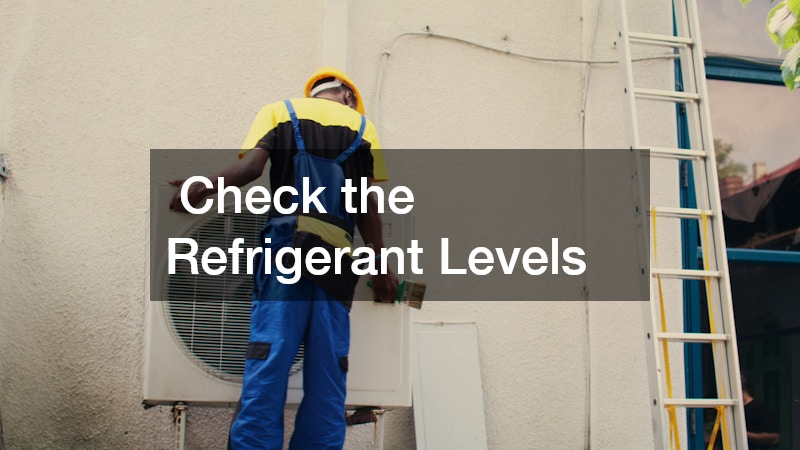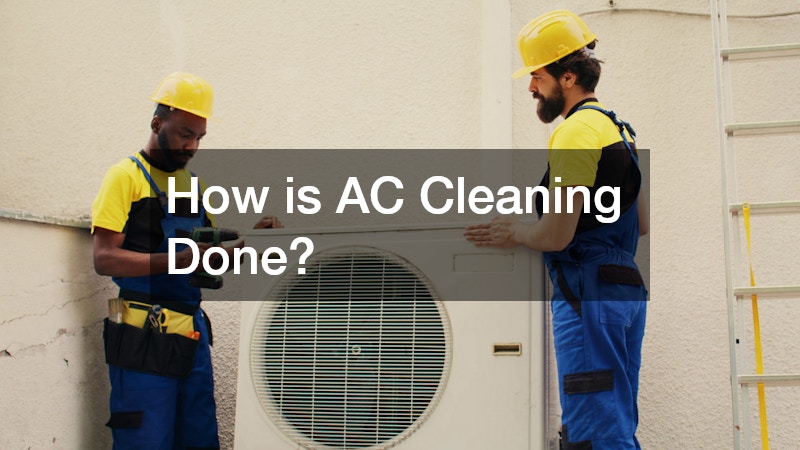Air conditioning (AC) units are essential in maintaining comfortable indoor temperatures during hot weather. However, like any other appliance, your AC system requires regular maintenance to operate at peak efficiency. One of the most crucial aspects of AC maintenance is cleaning. Over time, dust, dirt, and debris can accumulate inside your system, reducing its efficiency and potentially leading to costly repairs. In this article, we will explore how AC cleaning is done, why it’s important, and how regular cleaning can enhance your unit’s performance.
Why Is AC Cleaning Important?
Before we dive into the steps of cleaning your air conditioner, it’s essential to understand why this process is so important. Regular cleaning of your AC unit provides several benefits:
Improved Efficiency: Dust and debris can clog your system, forcing the unit to work harder and consume more energy. Cleaning helps restore the system’s efficiency, reducing energy consumption.
Extended Lifespan: A well-maintained AC unit is likely to last longer than one that’s neglected. Cleaning prevents the buildup of materials that could cause wear and tear on the components.
Better Air Quality: Over time, dirt and bacteria can accumulate in your AC system, leading to poor air quality. Regular cleaning helps ensure that the air circulating in your home is fresh and clean.
Prevention of Breakdowns: Cleaning helps identify and fix small issues before they turn into significant problems, reducing the chances of a system breakdown.
Now that you understand the importance of AC cleaning, let’s look at how the cleaning process is typically carried out.
Steps to Clean an AC Unit
AC cleaning should ideally be performed by a professional, as it involves handling electrical components and refrigerant. However, there are basic cleaning steps that homeowners can perform themselves to keep their systems running smoothly.
1. Turn Off the Power
The first and most important step in cleaning an AC unit is to turn off the power. AC systems run on electricity, and it’s essential to disconnect the power supply to avoid accidents or electrical shocks. You can turn off the power at the thermostat or at the circuit breaker for a more comprehensive shutdown.
2. Clean or Replace the Air Filter
The air filter is one of the most critical components in your AC system, as it traps dirt, dust, and other particles before they can enter the system. A clogged or dirty filter can restrict airflow, reduce efficiency, and lead to increased energy usage.
Cleaning: If your AC has a reusable filter, you can remove it and clean it by rinsing it under lukewarm water. You can also vacuum it to remove excess dirt. Be sure to let the filter dry completely before reinserting it into the system.
Replacing: If your filter is disposable, it’s a good idea to replace it with a new one, especially if it’s heavily clogged. Experts recommend replacing the filter every 1 to 3 months, depending on usage.
3. Clean the Coils
The evaporator and condenser coils play an essential role in the cooling process by absorbing and releasing heat. Over time, these coils can become dirty due to the accumulation of dust, dirt, and debris, which reduces the system’s ability to absorb and expel heat.
Evaporator Coils: The evaporator coils are located inside the air handler, and cleaning them is a delicate process. To clean the coils, gently vacuum or brush off any dust or debris. If needed, you can use a coil cleaner, which is available at most home improvement stores. It’s important not to bend or damage the delicate coils during cleaning.
Condenser Coils: The condenser coils are located in the outdoor unit of your AC system. To clean the condenser coils, remove any debris, such as leaves or twigs, from the surrounding area. Then, use a soft brush or coil cleaner to clean the coils. You may need to use a hose to rinse off the coils, but be careful not to use high-pressure water, as this can damage the coils.
4. Clean the Condensate Drain
The condensate drain is responsible for carrying away the moisture that the AC unit removes from the air. Over time, this drain can become clogged with algae, dirt, or debris, leading to water buildup and potential damage to the unit.
To clean the condensate drain, locate the drain line and use a wet-dry vacuum to suck out any debris. You can also pour a mixture of bleach and water into the drain to kill any algae or mold growth.
5. Check the Refrigerant Levels
The refrigerant is the substance that allows your AC unit to cool the air. Low refrigerant levels can lead to poor performance and higher energy bills. While it’s difficult to check refrigerant levels without professional tools, you should be aware of signs that the refrigerant may be low, such as:
Warm air coming from the vents
Ice forming on the evaporator coils
High energy bills despite normal usage
If you suspect low refrigerant levels, it’s important to call an HVAC professional. They can check and refill the refrigerant as needed, ensuring the system runs efficiently.
6. Clean the Blower Fan and Coils
The blower fan is responsible for circulating cool air throughout the home. Dirt and debris can build up on the fan blades, reducing airflow and causing the unit to work harder. Clean the fan blades by carefully wiping them with a damp cloth.
Additionally, check the blower coils and clean them as necessary. Keep the area around the fan free from any obstacles to ensure proper airflow.
7. Inspect and Clean the Ductwork
Finally, inspect your ductwork for any visible signs of dirt, dust, or mold. If you notice a buildup of debris inside the ducts, it’s time to have the ducts cleaned professionally. Dirty ducts can reduce airflow and affect the quality of air inside your home. Professional duct cleaning services use specialized tools to remove contaminants from the ducts, improving the overall efficiency of your HVAC system.
AC cleaning from air conditioning services is an essential part of maintaining your air conditioning system and ensuring it runs efficiently. By regularly cleaning or replacing the air filter, checking the coils, cleaning the condensate drain, and addressing any other issues, you can keep your system running smoothly and avoid costly repairs. While some cleaning tasks can be handled by homeowners, it’s always a good idea to have a professional perform a more thorough cleaning and inspection at least once a year.












